Very few companies start out using a specialized customer feedback tool for their product.
At the very start, you’re probably not getting much feedback to begin with. You’re likely not using a lot of different channels for feedback, either. So, not having a tool isn’t an issue.
We’ve all tracked product feedback in a spreadsheet or a Trello board at some point. However, there comes a time where a simple “solution” like this doesn’t cut it anymore.
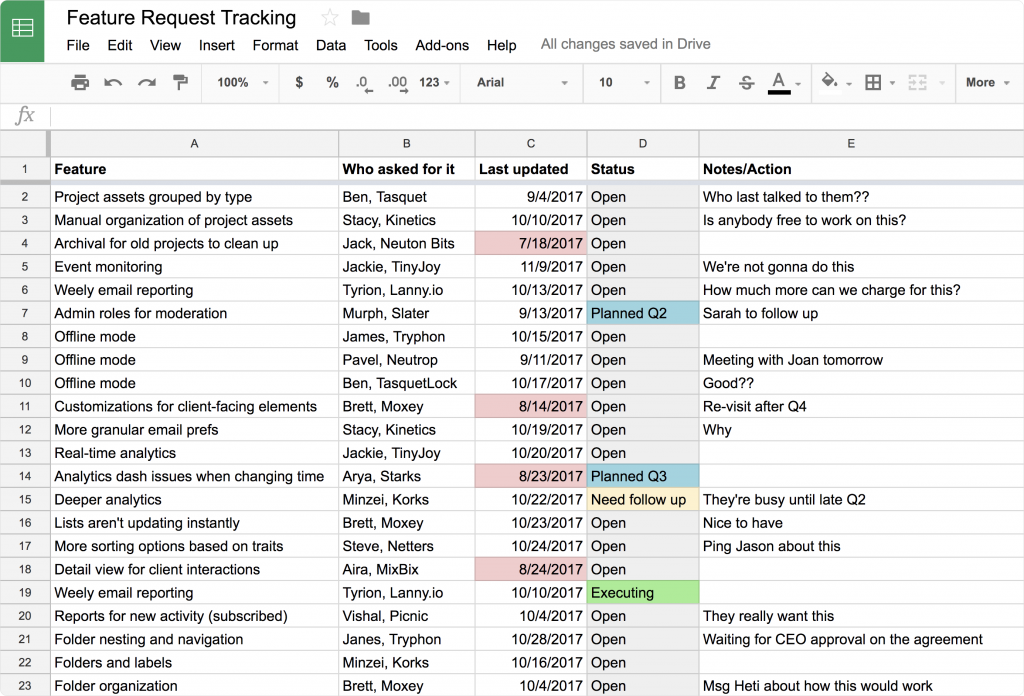
Many people assume that the need for a feedback tool comes from growing your business. You either:
- Have more employees and need to sync between them better
- Have more customers and need to organize their feedback better
These are both valid reasons for thinking about switching to a feedback tool. They’re also the most common ones. However, there’s more to it than that.
There are several other situations that can indicate it might be time to start using a specialized tool. Today, we’re going to go over them.
Feedback is getting lost
Users’ feedback slipping between the cracks is one of the most severe indicators of needing a feedback tool.
This issue can have several reasons:
- You don’t have a fixed feedback process in place (you get it, but don’t end up doing anything with it).
- You’re getting more users, but don’t have enough user-facing people to keep up with their feedback.
- You’re using too many external channels that have the ability to receive feedback (social media, surveys, chat, email, etc), and no way to consolidate it all.
…and, it can also be a combination of the above.
It happens so the best of us—sometimes. However, if it’s a recurring event, feedback getting lost is a major problem.
If it’s urgent issues that are getting lost, users won’t get solutions for their problems. They can’t use your product.
If ideas, feature requests, or other feedback is getting lost, users will feel like they’re not being listened to. It’ll make them thing you don’t care about your customers.

Either way, your business, your reputation, and your product are going to suffer.
The unfortunate thing is that a lot of users won’t tell you their messages are getting lost. They’ll just leave, and you’ll never know what was wrong. Losing customers is bad enough, but it also means you can’t improve.
Fortunately, there are still some who do speak up, and these people are usually very upset.
User feedback tools are built for making sure nothing gets lost:
- If it’s a feedback board, the users themselves are responsible for posting on it. This means that it can’t get lost in a single support agent’s inbox.
- Most feedback tools allow integrations with support channels such as Intercom, email, etc. This means that getting feedback into one, consolidated tool is just a matter of a click.
Remember—for every one person who actually complains, there are probably tons who don’t. If you feel like you’re already getting put down for losing feedback, it might be time to start using a feedback tool.
Your support teams have too much on their plate
Customer-facing employees have a lot of responsibilities regardless of how small or big the company is.
- In an early stage company, they have to build and shape the entire user facing strategy.
- In a more established one, they have to move into customer success and retention.
- Either way, they’re always dealing with an expanding user base, and a growing amount of feedback coming in.
Customer-facing teams aren’t just there to answer emails. They have a considerable role to play in keeping your business growing.
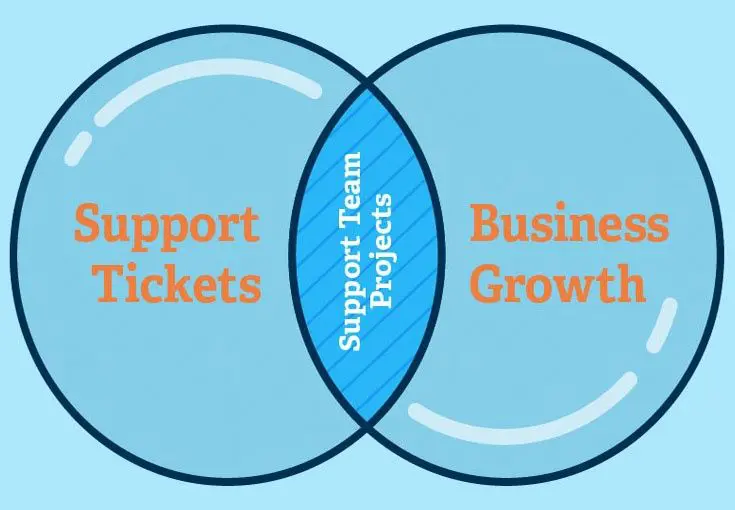
Sometimes, we find ourselves in a position where our support people are overwhelmed and burned out. Hiring new ones isn’t always an option because of financial issues.
It might also be too soon to hire a whole other person to help, if the overload isn’t massive.
In the case of the workload being too much, but not enough to hire more help, a specialized feedback tool can help with clearing some of the stuff on the plate.
- Integrations with support channels reduce the amount of manual work needed for gathering feedback in one place.
- Internal discussion features allow communication between team members without having to move out of the original source.
- All feedback being in one place means less time moving information around.
- Segmentation and voting systems can help with prioritization.
Keeping track of feedback in a tool also means more general peace of mind. Instead of trying to remember who asked for what, when, and why, and stressing about it, everything is in the tool whenever you need it.
Communication issues between product teams and customer-facing teams
We’ve talked about the communication problems between these teams before.
Support teams usually operate by gathering more general information, whereas product might need additional context or details.
With more feedback coming in, there’s also more need for context for better prioritization. Discussion and digging into issues is an integral part of an effective feedback cycle.
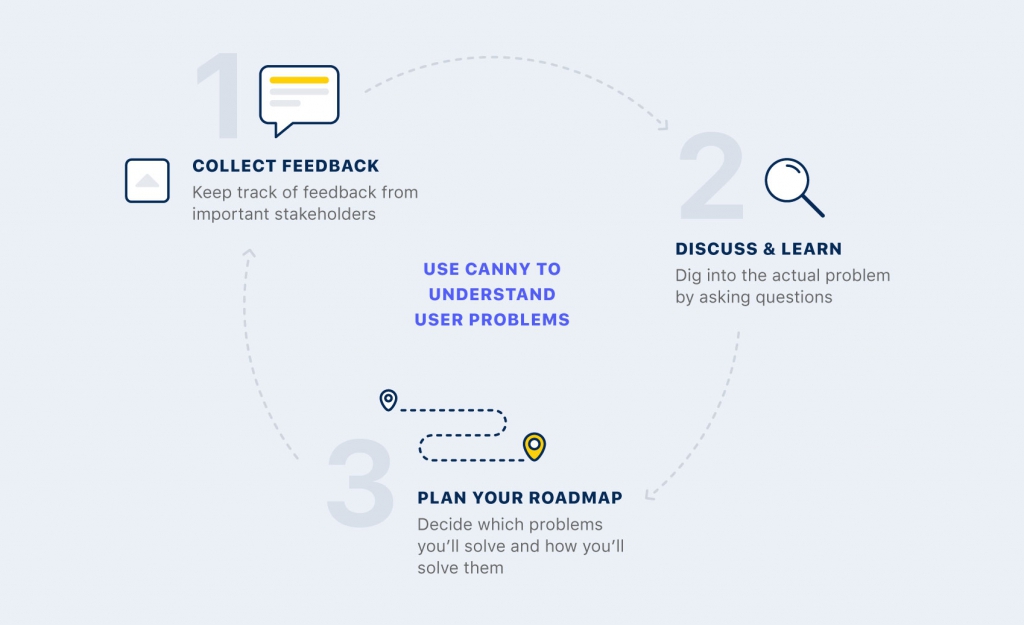
Very basic systems are often not enough for effective communication between the teams. There’s no place for additional discussion, comments, questions, or context.
If product needs more information, support needs to go back to their own source, have a conversation with the user, and then go back to product.
It’s endless back-and-forth, that can easily be eliminated or reduced by a feedback tool.
Product feedback tools put all the user feedback in one place, and also allow several people from a company to collaborate on it.
Software like Canny acts as the glue between product and support, allowing them to work on problem-solving and context together.

Product teams can go in and see the feedback for themselves, and engage in discussions with the users to create context for their work.
You want to be more transparent externally
You don’t have to open up your feedback tool for everyone to see. It’s okay to use it privately.
Dealing with feedback only internally is the safe and comfortable thing to do. However, there are some benefits to making it public.
Show people that you’re constantly iterating
We all assume that companies are working on making their product better all the time.
However, seeing that a business is trying to constantly improve creates much more trust for potential customers. Many feedback tools have a way of showing your roadmap as well as finished features.
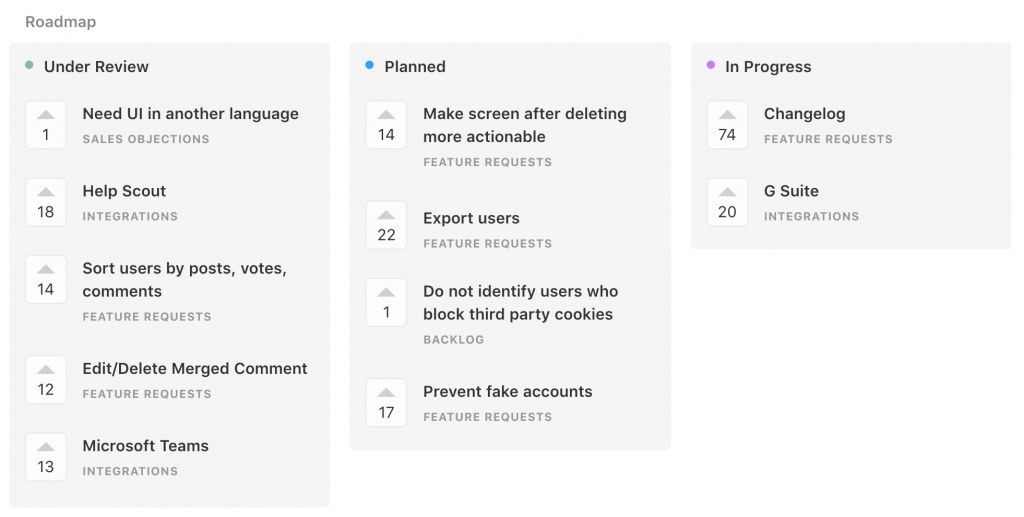
This could be the differentiator between you and a competitor.
Show people that you’re taking feedback seriously
We usually only see how a company reacts to our feedback. However, if we haven’t given feedback yet, we have basically no way of knowing how a company deals with it.
With a public board, we can take a peek into any company’s feedback, and see what they’re doing with it.
Additionally, we’ve all sent feedback and seen it disappear into the oblivion, followed by something like this:
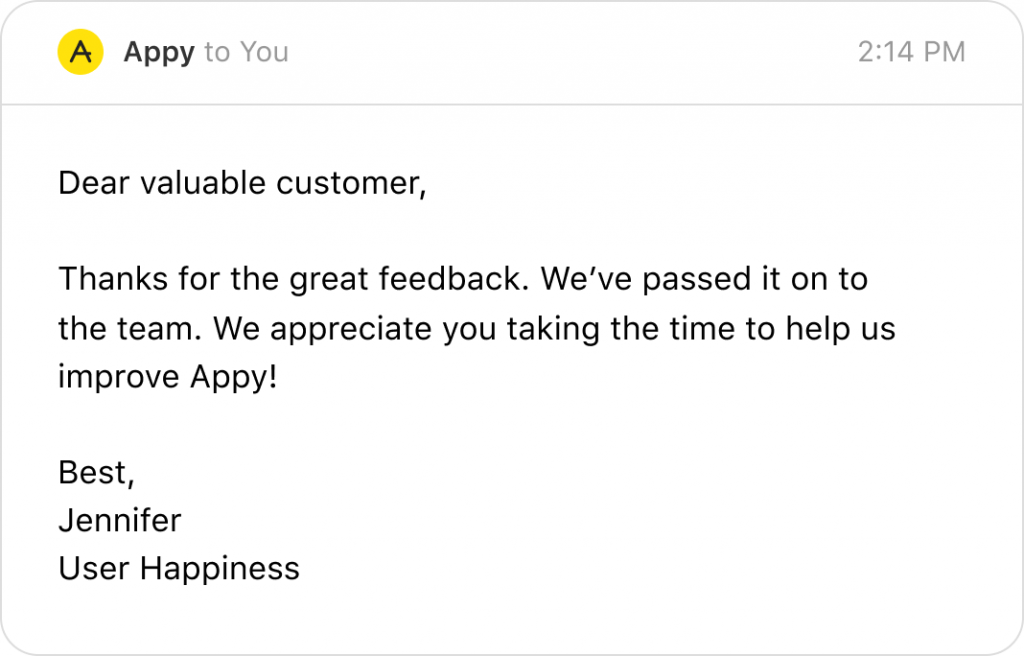
Clearly automated messages don’t feel very personal or reassuring. Did anyone get it? When will a real person see it? When will I receive a reply? Will I even get a real response at all?
With a feedback tool, we can constantly keep an eye on new feedback coming in. We can actively engage in a discussion with our users.
They can see that their feedback is still there, and not laying at the bottom of someone’s inbox somewhere.
If you actively engage with your users in your feedback tool, have discussions, and offer solutions, it’ll impress people who aren’t even your customers yet.
You want to communicate to your users more
So, you’re getting feedback, but you don’t feel like you’re engaging with your users enough. Similarly, you can feel that they’re not engaging with you enough.
Giving feedback via “traditional” means is usually a one-time, short interaction.
This interaction also usually happens between the user and just one of the team members, usually a support agent.
Feedback tools allow way more room for actual conversations with more members of the company.
It also encourages users who usually don’t give feedback to do so. If they see others doing it, and the company actively engaging with them and trying to solve their issues, they’ll want to get in on the action.
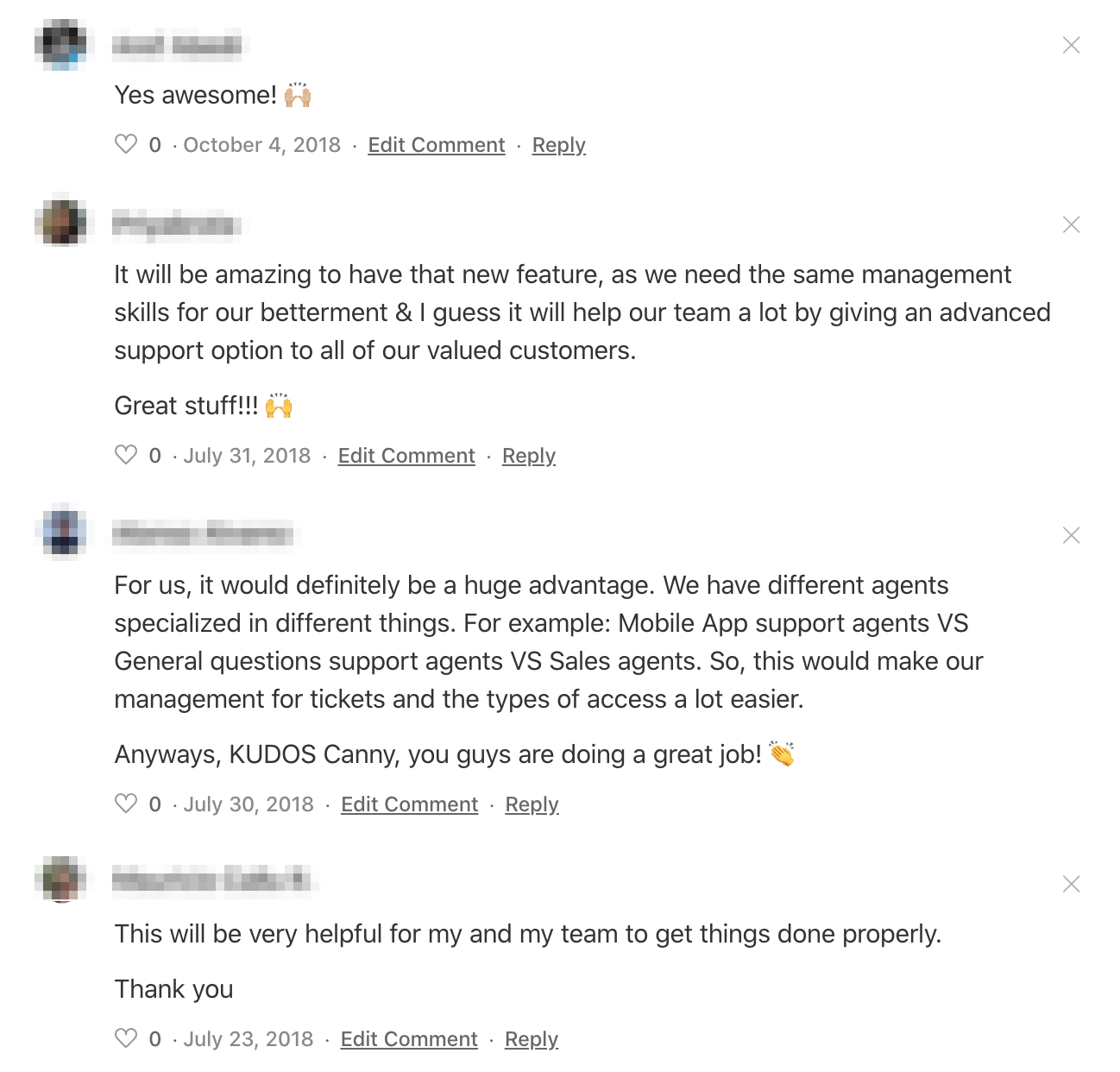
This means you’ll be receiving more feedback than you would if you only interacted with each user privately.
It’s also a great way for people who don’t have the time or energy to submit their own separate feedback.
They can just go and chime in quickly with someone else who has already described a problem, idea, or anything else they’ve had.
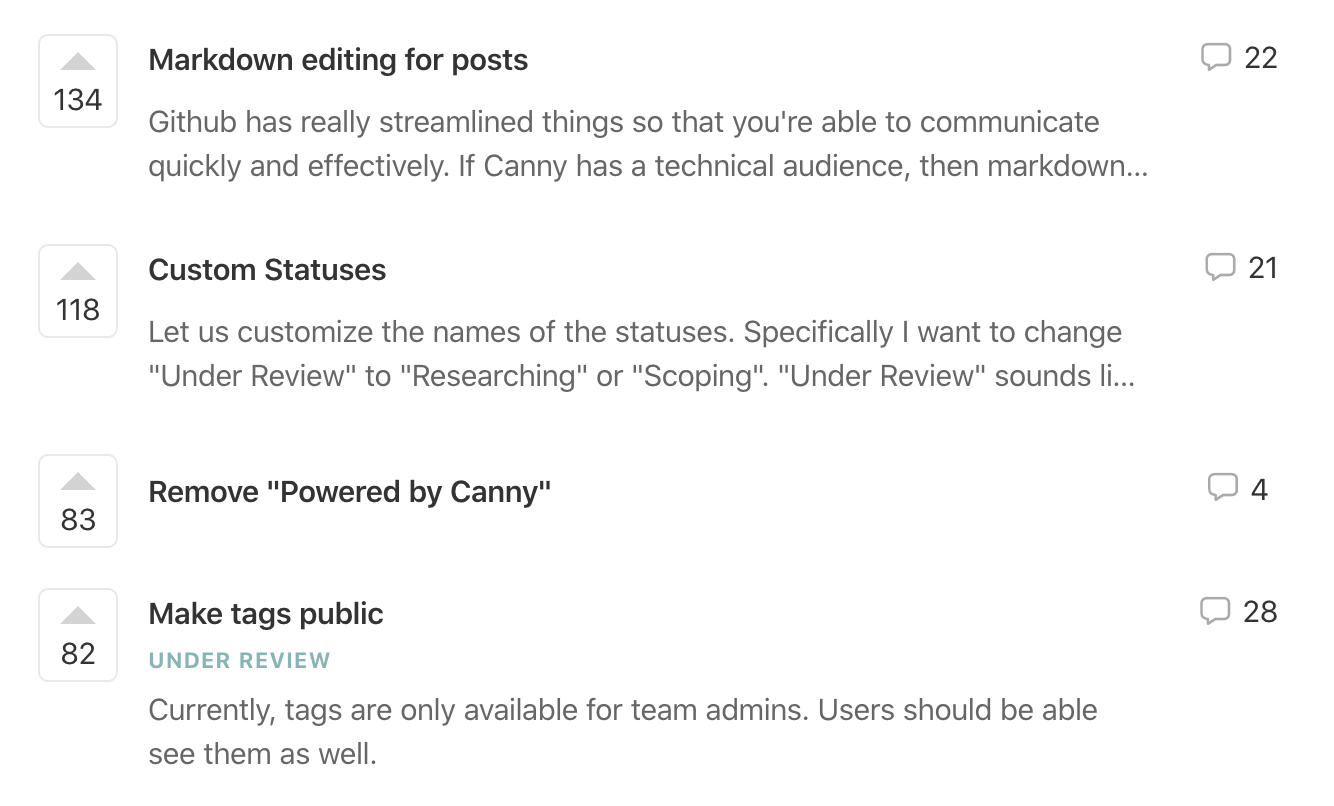
A feedback tool essentially makes giving feedback easier. Most people don’t have time to spend on sending complicated, detailed messages about everything they’re thinking.
With that process simplified, you’ll get much more insight into what more of your users need.
Streamline your process with a feedback tool
Do feedback tools cost money? Yes. Do they also make your life a lot easier? Also yes.
Feedback tools are meant to benefit both you and your user.
For you, they help reduce the amount of feedback lost and encourage communication between team members. They make prioritization easier, and organize feedback in an effective way.
For your users, it reduces the effort they have to make to give feedback or chime in.
You might be in a phase of your business where you don’t need a feedback tool yet. However, getting your feedback cycle in order is a good thing to do sooner rather than later.







Thanks for the heads up. I’ll keep an eye out for when I’d start needing a feedback tool. At the time, I can manually work around user feedback without the fear of loss.
Really nice piece, well done. I´m in the public sector and will probably have to develop a tool for getting feedback. Was tired but couldn’t get to sleep, so interesting! Thanks, keep it up.